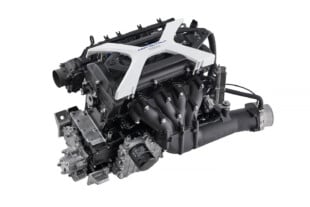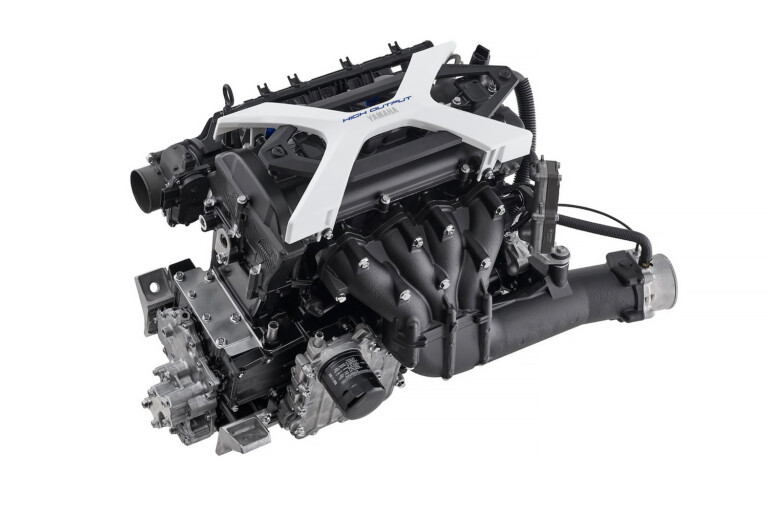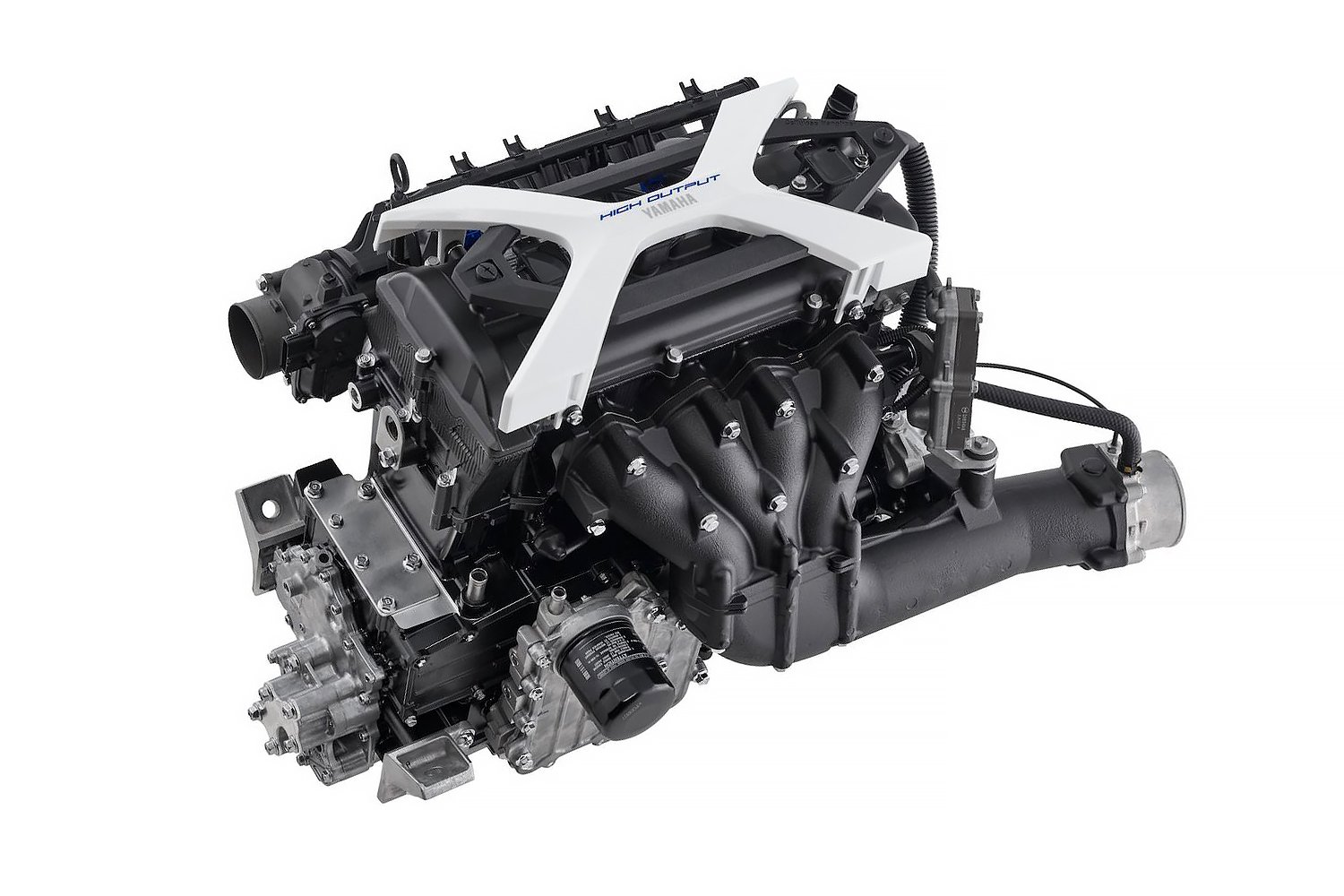Though aficionados moaned when Ferrari announced their newest midship car would be powered by a turbocharged engine in 2014, the worriers and naysayers were subsequently quieted after the release of the insatiable powerplant. The 488 GTB’s F154CB builds upon the already-remarkable shove of the outgoing, atmospheric V8 in the 458 and Speciale with an additional 163 lb-ft of torque, more power, and an astonishing reduction in carbon output. So astonishing, in fact, that it snagged the International Engine of the Year award for the second time running at the Engine Expo.
Unlike the last turbocharged V8 Ferrari unleashed on the public—the F40’s F120A—the F154CB delivers its power strongly from the lower end of the rev range. That can be attributed to low-density compressor wheels made from titanium aluminide, as well as the other technology baked into the twin-scroll IHI/Honeywell turbochargers, which are mounted on shafts carried by ball bearings. With a spool time of just 0.8 seconds at 2,000 rpm in Third gear, there’s always an accessible surge of torque to pull through the seven closely-stacked gears. Yet, it offers more than just response and low-end shove.
Will all that churning force on tap, Ferrari’s engineers needed to meter it out carefully with clever computer tuning to provide a predictable and progressive power delivery. As revs rise in the lower gears, the torque output increases accordingly to mimic the linear delivery of a normally-aspirated motor—though it’s still somewhat strangled. The F154 only deploys its full 660 horsepower and 561 lb-ft of torque in top gear, when the 305-section driven tire will accept the task. Because of the accessible powerband, drivers can make better use of the power available than they could in the 458, which required high revs to get the most out of it. Data taken from hot laps at Fiorano show drivers using all of the engine’s 660 horsepower, whereas less than 520 horsepower of the 458’s 557 total were used, most of the time.
One of the main reasons for fearing a force-fed Ferrari motor was the diminished sense of occasion brought on by a muted exhaust note. While the 488’s powerplant cannot match the banshee shriek of the 458’s motor, it still provides the occupants with an intimidating bellow complemented by the whistles and pops of the two massive turbochargers and their wastegates chattering away in unison. It’s a small price to pay for the incredible performance and that endless wave of pushing force, though Chris Harris wasn’t too disappointed with the sound.
For a motor which provides the punch necessary to outrun a McLaren F1, it’s still quite efficient with 21 mpg combined. Nobody really notices Ferraris for their fuel economy, though, so let’s admire some of its other less-apparent qualities. For one, the engine is only 35 pounds heavier with all the turbocharger ancillaries than the 458’s motor—and that’s compensated for by the 488 weighing 25 pounds less than its predecessor. It also produces 6% less CO2.
It’s “a giant leap forward for turbocharged engines in terms of efficiency, performance and flexibility,” said Co-chairman Graham Johnson. With near-unanimous support from the panel of judges, the stunning F154CB took home the International Engine of the Year the second year in a row. Not too shabby.




















